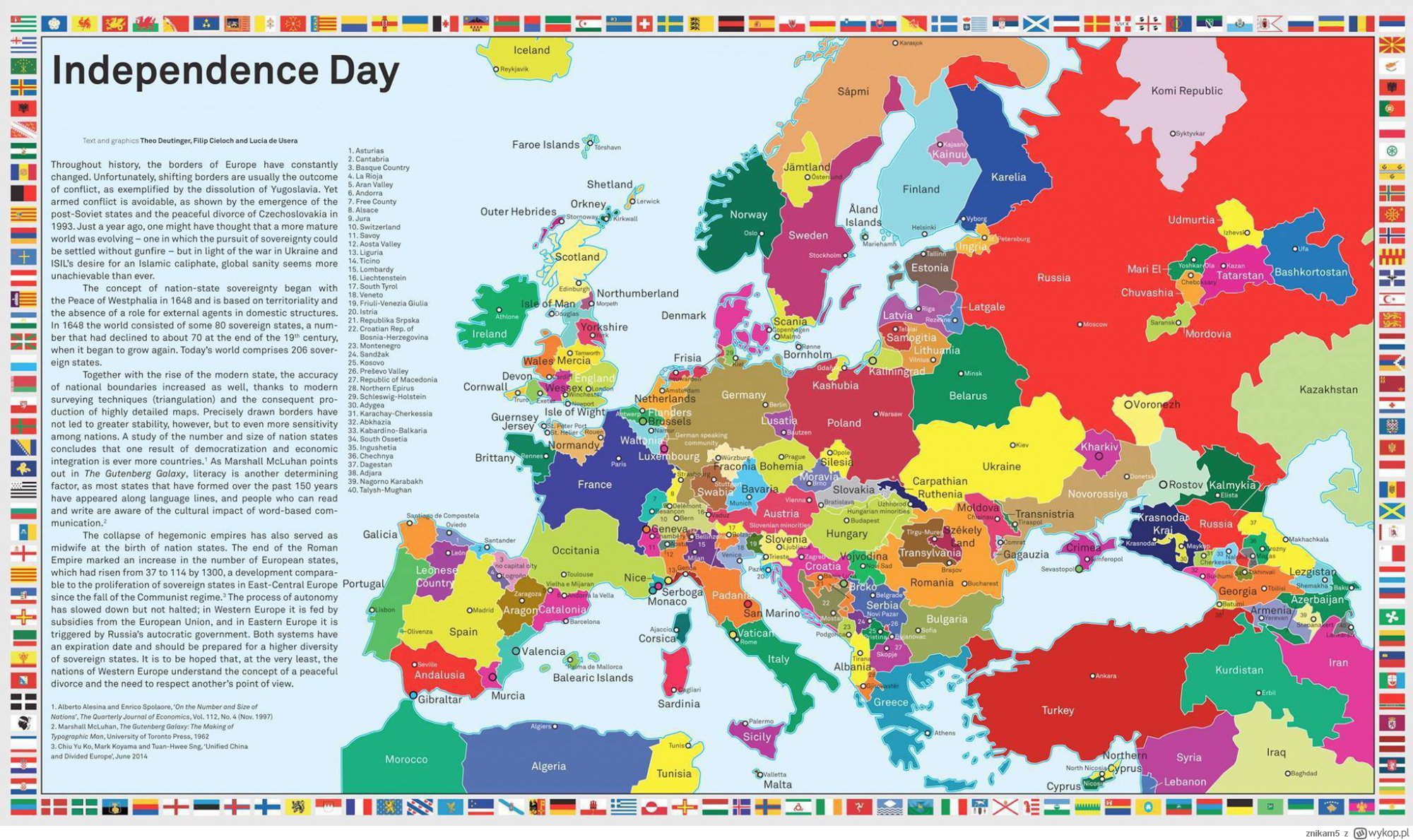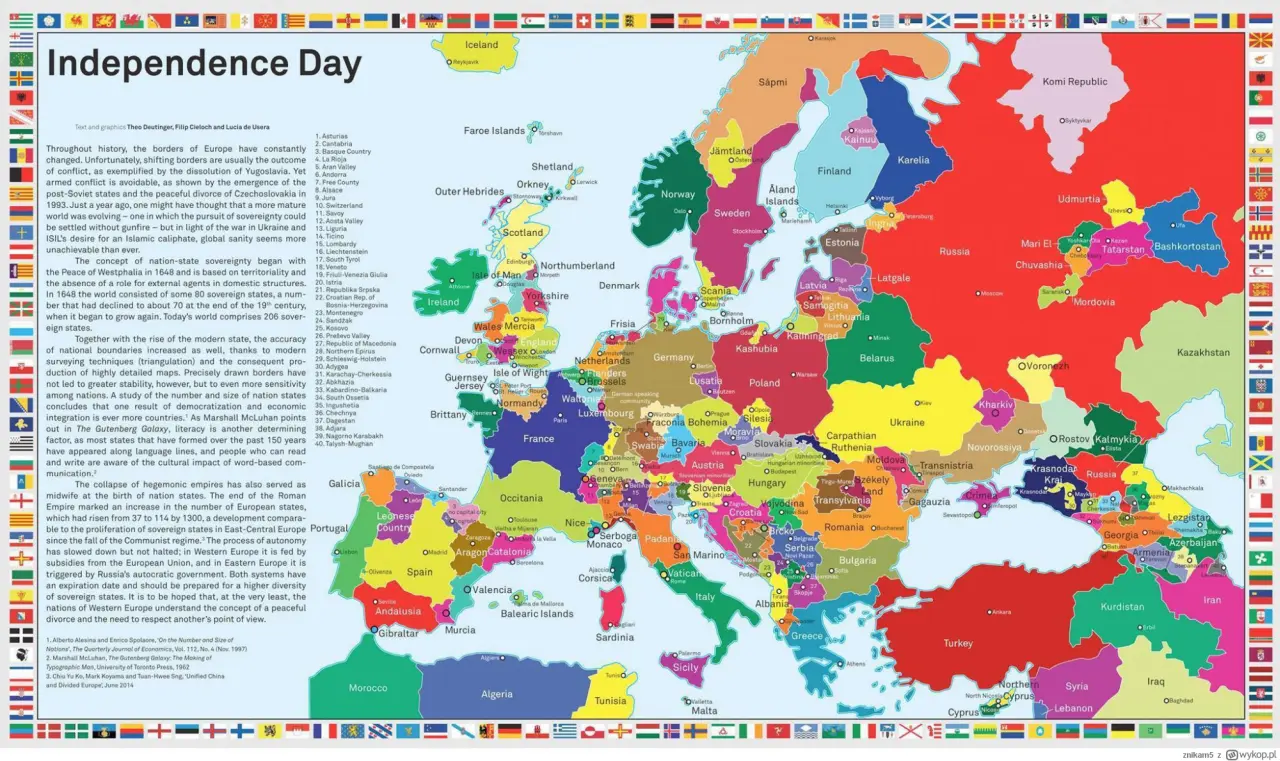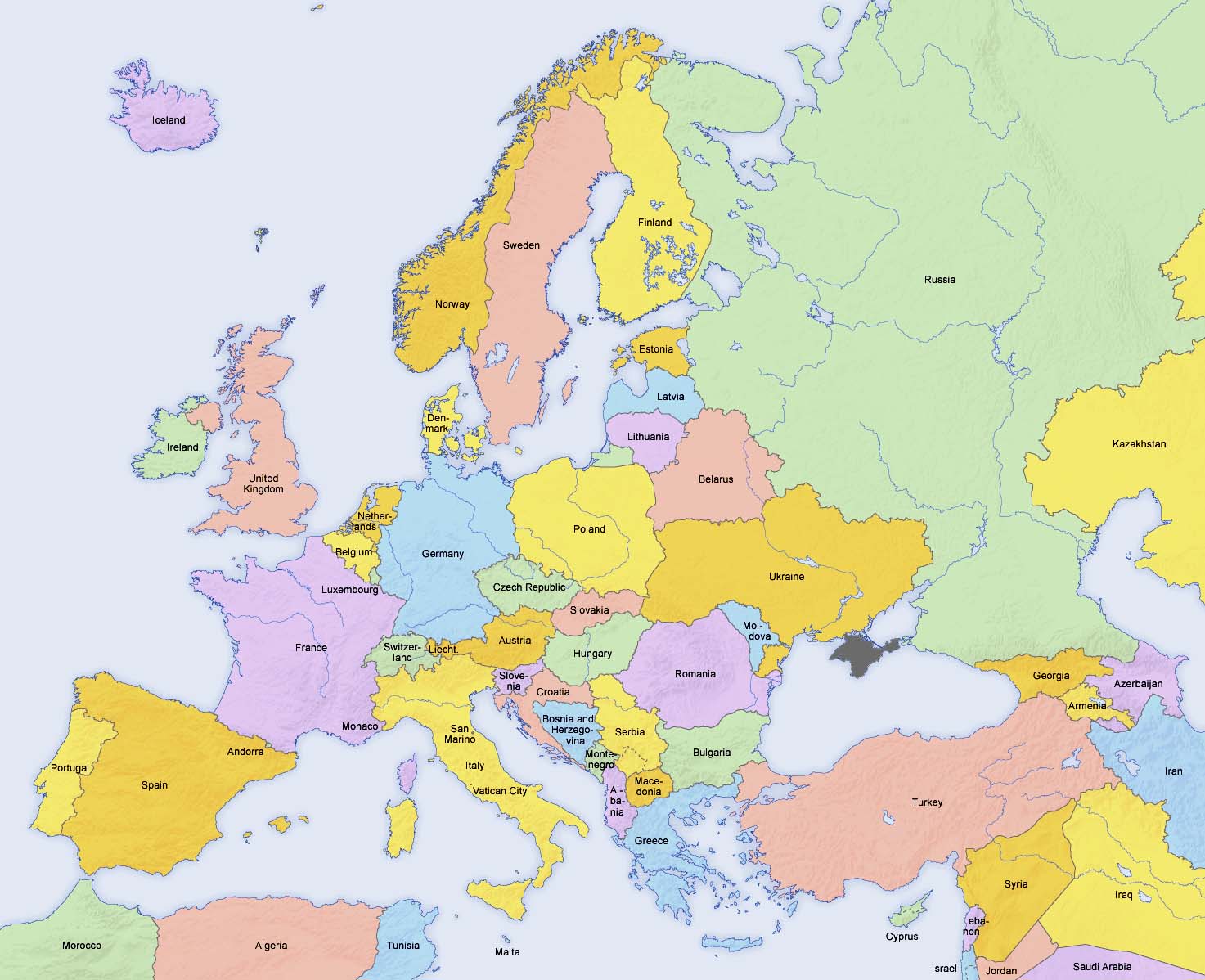Is Europe on the road to self-destruction? Secessionist movements are gaining momentum, and history proves they will be successful. The forces of disintegration in a world of constant conflict and change is challenging the Old World more than ever before.
Europe has a population of more that 740 million
It is a continent with 50 sovereign states, 6 with limited recognition and 4 dependencies. European countries opened up the world in the first wave of globalisation around the year 1500. Its major powers dominated the world in the following 450 years in terms of administrative rule, economic exploitation, military control, scientific development and expansion of political ideologies.
After WWII European domination was largely handed over to two superpowers, the United States and the USSR. After the fall of the USSR, the world was left with the United States as the only superpower. China is on the rise and will be on a par with the US in a few years.
The economic power of the globalised world has gradually shifted towards countries bordering the Pacific Ocean, away from the North Atlantic. What is the European answer to this?
First, one line of development has been towards European integration.
From the beginning it was conceived as a means to avoid future wars in Europe. The continent had during the first fifty years of the 20th century seen two devastating wars, later named world wars.
A peaceful cooperative path towards reconciliation, economic development and political integration led to the forming of structures that would evolve into the European Union.
This not so very tight union developed in depth. This means it got involved in more and more areas of civil, political and economic life. In geographical terms it saw a gradual expansion north, west, south, and after the fall of the Warsaw Pact even east. Today most countries in Europe are members of the EU.
The illustration below shows the current political map of Europe, including three countries in Africa and some in Asia.
The second line of development is that of disintegration.
At the basis of what we usually consider a civilised world lies the nation-state. However the very notion of it only developed after the Peace of Westphalia in 1648 and is based on territoriality and the absence of a role for external agents in domestic structures – autonomy, so to say. Since that agreement the political map of Europe has seen many changes, many times.
Indeed, the map shows states or countries which have only been autonomous for a decade or three, not to mention the changes we have seen during the last hundred years. Furthermore, the Europe as we know it today is very much on the road towards further divisions.
Let us develop this line of thought a little more.
The European Union has been sponsoring cooperative initiatives between regions in Europe. For political reasons that sponsorship has its limits. The nation-state is the basic premise for EU membership, and is incorporated into the core of EU decision-making. If a region goes too far, it will be stopped by the country’s government and legislature. If the EU goes too far in pulling sensitive decisions away from a nation-state, it or they would stall it.
On the other hand I would estimate that most European nation-states have a sort of internal administrative divisions. They come by different names like the Swiss cantons, German länder, Norwegian fylker, or Scottish home rule within the United Kingdom. Cordiality between the regions is not always present, like for instance in Italy.
A lack of mutual respect or cooperative sentiments led to war in former Yugoslavia. This again caused the formation of six (or seven) new countries. Two recent examples are the war in eastern Ukraine and the comparatively peaceful referendum in Catalonia, Spain.
This leads me to this map
In fact, it was this map that triggered me into writing this article. Have a look at it and read my explanation below.

Europe according to secessionist movements (Source: Wykop.Pl) (Click to expand)
The map shows what Europe would look like if every secessionist movement was successful, defined as removing itself from the country it now is part of, to form its own. At first sight it seems extreme, on second thought perhaps not. In reality, the odds are not bad.
According to the text on the left side of the map, democratisation and economic integration leads to more countries. Who would argue that Europe is on a path away from these two elements? Furthermore, the map is based on this assumption. “Most states that have formed over the last 150 years have appeared along language lines, and people who can read and write are aware of the cultural impact of word-based communication”.
One could argue that this is a map of what is just. Others would say it is a map of chaos
It is definitely a map of diversity and shows, compared to the country map above, how lingual and cultural differences are contained within the borders of what today is considered nation-states, or at least countries. International, EU and national legislatures have for decades been addressing this issue, offering gradually increased autonomy to some regions (like in Spain), and accepting the autonomy of countries demanding their right to autonomy (like the countries in former Yugoslavia).
The trend is nonetheless towards increased independence of the region from its central (sometimes not so very national) government.
One would hope that the development in Europe goes peacefully. For the time being, the separatist violent movements have been stalled – like in Corsica (France), Northern Ireland (UK) and the Basque region (Spain). The really big question is however what Europe would be like in 50 to 100 years. There is little reason to believe that all coloured areas on the map will come into effect as autonomous countries.
Europe’s fate
Europe’s fate would to some extent be determined by how the disintegrated nation-states succeed. Even a lame European Union would be able to compete on the global stage.
Considering the changes we are watching around the world, I fear there is reason for pessimism on behalf of the European population. There is no reason to believe that a disintegrated Europe would benefit the continent’s position on the world stage. For instance I do not believe the Catalan effort to gain autonomy is good for themselves, Spain or Europe, in the long run. Nor is Brexit a particularly sound decision.



